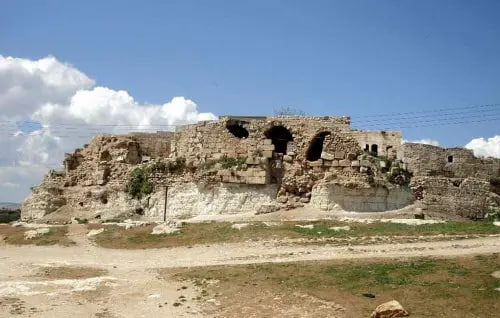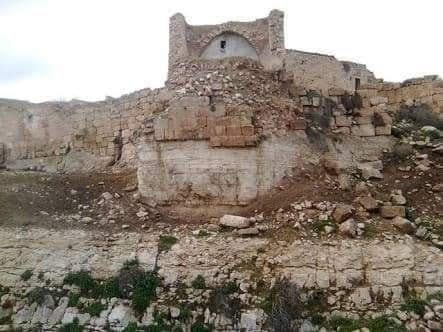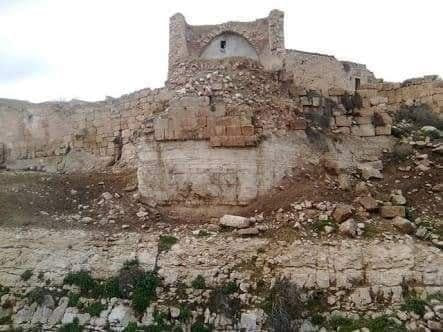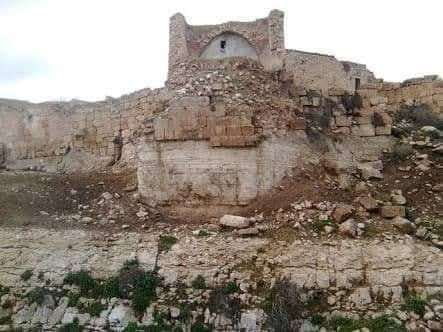The Maarrat al-Nu’man Citadel is located on the top of a high limestone plateau overlooking the trade route that connects the cities of Hama and Aleppo. It is surrounded on three sides by al-Hermas seasonal river. It is believed that the citadel dates back to the Roman era. The Hamdanids reused it later, but it was destroyed during the First Crusade before being restored under the Ayyubids.
The Citadel of Ma’arrat al-Numan stands as a living testament to the rich history of the city, reflecting its strategic importance as a vital stop for caravans and a center for the convergence of diverse civilizations throughout the ages.
The citadel witnessed one of the most terrible massacres of the First Crusade in the year 1098, when a large number of residents of Ma’arra sought refuge within its walls to escape the Crusaders forces. After a siege lasting around fifteen days, the population was falsely promised safety, only for thousands to be killed in one of the most brutal massacres recorded in historical sources.
Some Crusader accounts describe the castle as having two layers of construction: an outer shell made of polished stones and an inner core of dense limestone rubble, which gave it greater resistance to catapult attacks. The East Square Tower contained a spiral staircase that led to an open rooftop used by archers to defend the citadel.
In 1235, the Ayyubid ruler of Hama ordered the citadel’s reconstruction, but it was destroyed again in 1240 by the Khwarazmians. In 2019, the western side of the citadel was hit by a major explosion; However, topographic surveys indicated that it could be restored using adequate stone molds to return it to its original form.
The Citadel of Maarrat al-Nu’man stands today as a living testament to the city’s rich history and reflects the strategic meaning of its location. Across the ages, it served as a significant landmark for caravans and a crossroads of civilizations.
The Citadel of Ma’arrat al-Numan stands as a living testament to the rich history of the city, reflecting its strategic importance as a vital stop for caravans and a center for the convergence of diverse civilizations throughout the ages.









